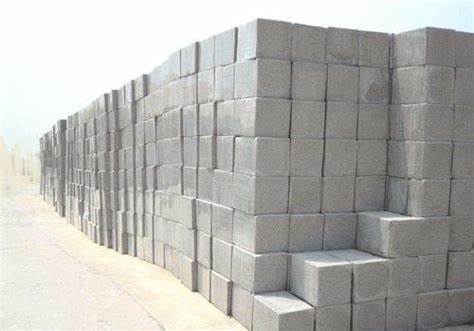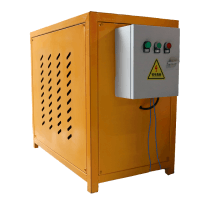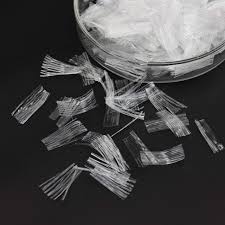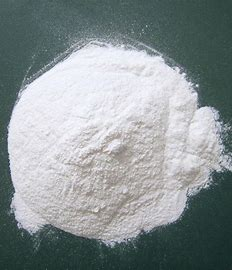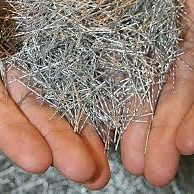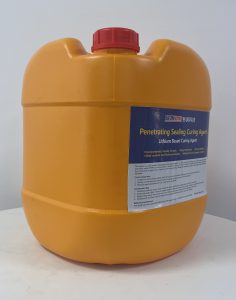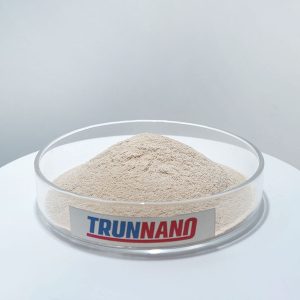Professional solutions on concrete addtives, Concrete Foaming Agent, Superplasticizer, CLC Blocks Additives, and foaming machine
(Causes of cracks in mass concrete)
In large-volume concrete structures, due to the large structural cross-section and large amount of cement, the hydration heat released by the hydration of the cement will produce large temperature changes and shrinkage. The resulting temperature shrinkage stress is the main cause of cracks in reinforced concrete. Reason. There are two types of cracks: surface cracks and through cracks. The different heat dissipation conditions between the surface and the interior of the concrete cause surface cracks. The temperature is low outside and high inside, forming a temperature gradient, which causes compressive stress inside the concrete and tensile stress on the surface. The tensile stress on the surface exceeds the tensile strength of the concrete.
Through-hole cracks are caused by the gradual cooling of large-volume concrete when its strength develops to a certain extent. The deformation caused by this cooling difference is combined with the volume shrinkage deformation caused by water loss in the concrete and the tensile stress caused by the constraints of the foundation and other structural boundary conditions. Cracks may occur throughout the entire section when the tensile strength of concrete is exceeded. Both types of cracks are harmful cracks to varying degrees.
High-strength concrete has a larger early shrinkage. This is because 30% to 60% of mineral fine admixtures replace cement in high-strength concrete. The dosage of the high-efficiency water-reducing agent is 1% to 2% of the total cementitious material. Water glue The ratio is 0.25~0.40, which improves the concrete microstructure and brings many excellent properties to high-strength concrete. However, its most prominent negative effect is the increase in the probability of concrete shrinkage cracks. The shrinkage of high-strength concrete is mainly drying shrinkage, temperature shrinkage, plastic shrinkage, chemical shrinkage, and autogenous shrinkage.
The time when concrete cracks first appear can be used as a reference to determine the cause of the cracks:
· Plastic shrinkage cracks appear about a few hours to more than ten hours after pouring.
· Temperature shrinkage cracks appear about 2 to 10 days after pouring.
· Autogenous shrinkage mainly occurs after the concrete solidifies and hardens.
A few days to dozens of days, drying shrinkage cracks appear close to 1 year of age.
1. Drying shrinkage
When concrete loses the adsorbed water in its internal capillary and gel pores in unsaturated air, dry shrinkage will occur. The porosity of high-performance concrete is lower than that of ordinary concrete, so the dry shrinkage rate is also low.
2. Plastic shrinkage
Plastic shrinkage occurs during the plastic phase of concrete before it hardens. High-strength concrete has a low water-cement ratio and less free moisture; fine mineral admixtures are more sensitive to water. High-strength concrete does not bleed, and the surface loses water faster, so plastic shrinkage of high-strength concrete is easier than that of ordinary concrete.
3. Self-shrinking
The relative humidity inside sealed concrete decreases with the progress of cement hydration, which is called self-drying. Self-drying causes the water in the capillary pores to be unsaturated and generates negative pressure, thus causing the autogenous shrinkage of concrete. Due to the low water-to-cement ratio of high-strength concrete, the rapid development of early strength will cause free water to be consumed quickly, causing the relative humidity in the pore system to be lower than 80%. However, the structure of high-strength concrete is dense, and it is difficult for external water to penetrate and supplement, resulting in concrete formation. Self-shrinking.
In the total shrinkage of high-strength concrete, dry shrinkage, and autogenous shrinkage are almost equal. The lower the water-cement ratio, the greater the proportion of autogenous shrinkage. It is completely different from ordinary concrete. Ordinary concrete mainly shrinks due to drying, while high-strength concrete shrinks automatically.
4. Temperature shrinkage
For concrete with higher strength requirements, the amount of cement is relatively large, the heat of hydration is large, and the temperature rise rate is also large, generally reaching 35~40°C. Adding the initial temperature can make the maximum temperature exceed 70~80°C. Generally, the thermal expansion coefficient of concrete is 10×10-6/℃. When the temperature drops by 20~25℃, the cold shrinkage caused is 2~2.5×10-4, while the ultimate tensile value of concrete is only 1~1.5×10-Therefore, cold shrinkage often causes concrete cracking.
5. Chemical shrinkage
After the cement is hydrated, the solid phase volume increases, but the absolute volume of the cement-water system decreases, forming many capillary pores. The water-cement ratio of high-strength concrete is small, and fine mineral admixtures are added externally, so the hydration degree is restricted. The chemical shrinkage of high-strength concrete is less than that of ordinary concrete.
When concrete shrinks and becomes externally or internally restrained, tensile stresses develop, potentially causing cracking. Although high-strength concrete has high tensile strength, its elastic modulus is also high. Under the same shrinkage deformation, it will cause higher tensile stress since high-strength concrete has low creep capacity and small stress relaxation, Poor crack resistance.
Supplier
TRUNNANO is a supplier of Cement Anti-crack Agent-Preventing Cracks in Foam Concrete(which is one of concrete additives) with over 12 years experience in nano-building energy conservation and nanotechnology development. It accepts payment via Credit Card, T/T, West Union and Paypal. Trunnano will ship the goods to customers overseas through FedEx, DHL, by air, or by sea. If you are looking for high quality concrete crack reducing admixture, please feel free to contact us and send an inquiry. (sales@cabr-concrete.com).
(Causes of cracks in mass concrete)


